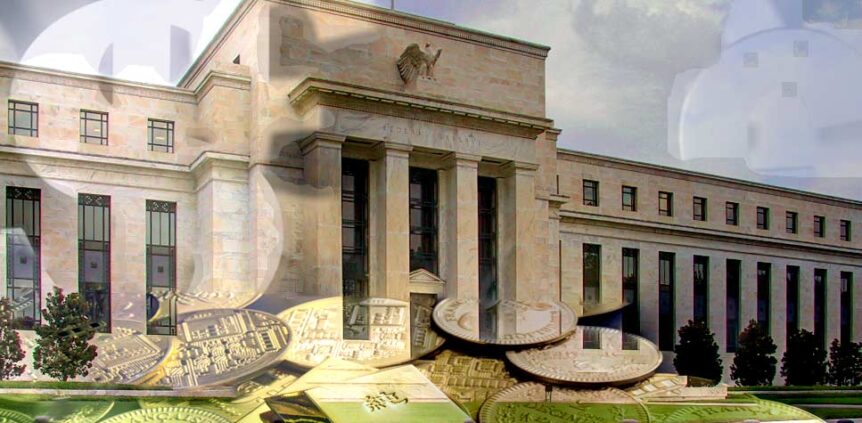Interest rates are a key indicator of how market trends and economic policies influence the value of this precious metal. For investors seeking to understand the complex relationship between gold and the broader economy, exploring these interest rates offers valuable insights. This guide explains how these rates shape gold prices, supply and demand dynamics, and investment strategies.
| Key Takeaways |
|---|
| Gold and interest rates are key indicators of how economic policies and trends influence gold’s value. |
| Gold performs well when interest rates fall, making it a reliable hedge against inflation. |
| Shifts in interest rates impact gold’s mining costs and investor demand, driving market changes. |
| The Federal Reserve’s rate decisions significantly influence gold prices and investor sentiment. |
| OWNx makes investing in gold simple, helping you diversify and protect your portfolio. |
| Gold remains a trusted safe haven, even during periods of rising interest rates and economic uncertainty. |

Start buying precious metals at cost.
How Gold & Interest Rates Influence Gold Prices
Gold prices and interest rates often share an inverse relationship, but the market can shift in a few seconds after key announcements. When interest rates rise, the opportunity cost of holding gold increases because gold, as a non-yielding asset, doesn’t generate income like bonds or savings accounts. Conversely, when rates fall, gold becomes more attractive, leading to higher prices. Investors turn to gold during low-interest periods, viewing it as a hedge against inflation and currency devaluation.
The Role of Interest Rates in Shaping Supply and Demand Dynamics
The interest rate also plays a crucial role in the dynamics of the gold market, shaping how investors allocate their funds. On the supply side, higher rates can increase the cost of borrowing for gold miners, potentially slowing production. On the demand side, falling interest rates often encourage investment in gold as a safe haven, especially during economic uncertainty. This dynamic highlights how closely intertwined interest rates are with gold’s position in the global economy.
The Federal Reserve’s Influence on Gold and Interest Rates
The Federal Reserve holds significant power over interest rates, directly influencing gold prices. Through adjustments to the federal funds rate and other monetary policy tools, the Federal Reserve shapes inflation expectations and market sentiment. A rate hike often signals economic growth but can weigh on gold prices. Conversely, rate cuts tend to spur interest in gold as investors seek stability in a low-yield environment.
Historical Trends: Gold Prices and Interest Rates Over Time
Historical trends show the intricate interplay between gold prices and interest rates. In the 1970s, gold prices surged despite high interest rates due to economic turmoil and inflation fears. More recently, periods of low or negative real interest rates have supported higher gold prices, underscoring gold’s value as a hedge against economic instability. Understanding these trends equips investors to anticipate how gold might respond to future rate changes.
Why Gold Remains a Safe Haven Amid Rising Interest Rates
Even when interest rates rise, gold’s reputation as a safe haven remains intact. Economic uncertainties, geopolitical tensions, or stock market volatility can drive investors to gold regardless of the rate environment. Gold’s status as a store of value and its intrinsic appeal make it a reliable asset during turbulent times, ensuring its role in diversified investment portfolios.

Start buying precious metals at cost.
Balancing Gold in Your Investment Portfolio
Including gold in an investment portfolio can provide balance and stability. While rising interest rates might increase the opportunity cost of holding gold, its role as a hedge against inflation and market risk often outweighs these concerns. A strategic mix of gold with other asset classes can help mitigate risks and enhance long-term returns, making gold a valuable component in any investment strategy.
Conclusion
Understanding gold and interest rates and their influence on gold prices, supply and demand, and market behavior is essential for investors seeking to optimize their portfolios. Gold’s enduring appeal as a hedge against inflation and a safe haven in times of economic uncertainty ensures its place as a cornerstone of smart investing. Whether rates rise or fall, including gold in a diversified portfolio can offer long-term stability and protection. OWNx makes this process simple, providing the tools and guidance to help investors confidently achieve their financial goals.
FAQs
What are gold reserves, and why are they important?
Gold reserves are gold holdings maintained by central banks and governments to support currency stability and economic security.
How does the interest rate affect gold prices?
Gold prices often have a negative correlation with the interest rate, as rising rates increase the opportunity cost of holding non-yielding assets like gold.
Why do central banks hold gold as part of their reserves?
Central banks use gold reserves as a hedge against currency fluctuations and other factors that can impact economic stability.
What drives the negative correlation between gold prices and the dollar?
Gold prices tend to rise when the dollar weakens, as many investors shift to gold or other currencies for stability.
Why do many investors choose gold despite it being a non yielding asset?
Many investors value gold for its reliability during economic uncertainty, even though it doesn’t generate income like bonds or stocks.
What are some other factors that influence gold prices?
Gold prices are shaped by many factors, including inflation, geopolitical tensions, and changes in supply and demand.
